Lenovo ThinkPad X1 Carbon 9th Gen review – quad-channel memory and ultracompact body
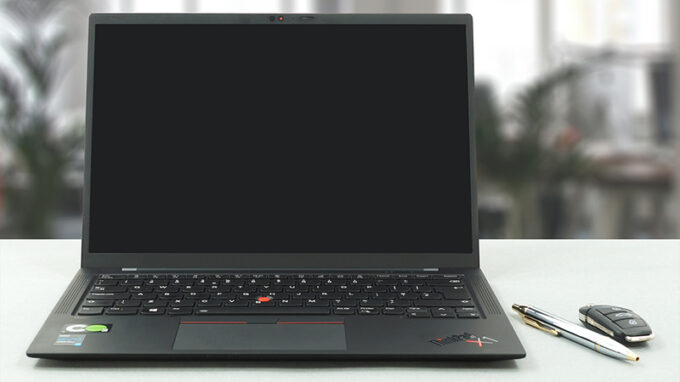 In 2021, the ThinkPad X1 series has become one of the largest ones on the market. It was thanks to the inclusion of the Fold, Nano, and Titanium offerings. But is this expansion going to cannibalize the ThinkPad X1 Carbon that we all love? It might, but it won’t be soon.
In 2021, the ThinkPad X1 series has become one of the largest ones on the market. It was thanks to the inclusion of the Fold, Nano, and Titanium offerings. But is this expansion going to cannibalize the ThinkPad X1 Carbon that we all love? It might, but it won’t be soon.
The main reason for that can be seen in the fact that Lenovo brought some good improvements with the 9th generation Carbon device. Aside from the obvious Tiger Lake architecture, you get a display with a 16:10 aspect ratio, and up to a 4K resolution. The manufacturer even goes as far as to say that the latter covers 100% of the DCI-P3 color gamut, and supports HDR 400.
We’ll see about that, but before we delve into the tests, it will be good to talk about the build quality of this machine. After all, it doesn’t come cheap, but usually, Lenovo takes care of its customers, especially when it comes to the ThinkPad X1 subbrand.
You can check the prices and configurations in our Specs System: https://laptopmedia.com/series/lenovo-thinkpad-x1-carbon-9th-gen-2021/
Contents
Specs Sheet
- HDD/SSD
- up to 2000GB SSD
- M.2 Slot
- 1x 2280 M.2 PCIe 4.0 x4 See photo
- RAM
- up to 32GB
- OS
- Windows 10 Pro, Windows 11 Pro, Windows 10 Home
- Battery
- 57Wh, 3-cell
- Body material
- Carbon, Magnesium alloy
- Dimensions
- 315 x 221.6 x 14.9 mm (12.40" x 8.72" x 0.59")
- Weight
- 1.13 kg (2.5 lbs)
- Ports and connectivity
- 2x USB Type-A
- 3.2 Gen 1 (5 Gbps)
- 2x USB Type-C
- Thunderbolt 4, Power Delivery (PD), DisplayPort
- HDMI
- 2.0
- Card reader
- Ethernet LAN
- Wi-Fi
- 802.11ax
- Bluetooth
- 5.2
- Audio jack
- 3.5mm Combo Jack
- Features
- Fingerprint reader
- optional
- Web camera
- HD
- Backlit keyboard
- Microphone
- 4x 360-degree Microphones
- Speakers
- 2x 2W, Dolby Atmos
- Optical drive
- Security Lock slot
- Kensington Lock Slot
All Lenovo ThinkPad X1 Carbon (9th Gen, 2021) configurations
What’s in the box?
Inside the package, there are some paper manuals, and a 65W USB Type-C power adapter, which supports the Rapid Charge technology. It allows you to get the battery from 0-80% in just an hour.
Design and construction
It’s not a surprise that this device features carbon fiber in its build. However, to make the laptop even more structurally sound, the manufacturer has employed the use of a magnesium alloy. These materials help the ThinkPad X1 Carbon achieve a thickness of 14.9mm and a weight of only 1.13 kg. Of course, at this size, you should expect some flex in the structure, but honestly, Lenovo has done a good job.
Also, the lid opens easily with one hand, thanks to the smooth hinges. This reveals a glossy panel with thin bezels all around. Moreover, the top one houses a 720p Web camera with a privacy shutter, and an optional IR face recognition sensor.
To continue with biometrics, there is a fingerprint reader mounted on the power button. Then comes the keyboard, where we see that Lenovo has once more outdone itself. It has respectable key travel, clicky feedback, a backlight, and offers spill resistance. What else do you need? We mark a return for the TrackPoint, which is traditionally paired with three buttons placed above the touchpad.
Speaking of which, the touchpad has a glass cover and a smooth rubberized finish on top. Unfortunately, we find the size to be a bit too small, and this is mainly contributed to the three dedicated buttons up top. And although its clicking mechanism is a bit short, the feedback seems really consistent.
If you haven’t noticed, the keyboard is surrounded by two speaker grills. There are two more on the bottom panel, in addition to the tiny vent on the bottom panel. Hot air, on the other hand, is being exhausted from the back of the base, with the airflow being split by the lid cover.
Ports
On the left side of the device, there are two Thunderbolt 4 connectors, a USB Type-A 3.2 (Gen. 1) port, and an HDMI 2.0 connector. Then, on the right, you get a Kensington Nano security slot, another USB Type-A 3.2 (Gen. 1) port, a SIM card tray, and an audio jack.
Disassembly, upgrade options and maintenance
To take this laptop apart, you need to undo 5 captive Phillips-head screws. Then, pry the bottom panel with a plastic tool and remove it from the chassis.
This device is powered by a 57Wh battery pack. And if you want to remove the battery, you need to undo a total of 6 Phillips-head screws before being able to lift it away. Unfortunately, the memory here is soldered to the motherboard. On the bright side, the largest configuration available comes with 32GB of RAM working in quad-channel mode. As for the storage, there is one M.2 PCIe x4 slot placed just above the battery.
Lastly, there is the cooling. It comprises a single heat pipe, a heat sink, and two very small fans. Additionally, two tiny heat spreaders manage the thermals of the VRMs.
Display quality
Lenovo ThinkPad X1 Carbon 9th Gen has a 4K IPS panel, AUO B140ZAN02.1 (LEN4038). Its diagonal is 14-inch (35.5 cm), and the resolution – 3840 х 2400p. Additionally, the screen ratio is 16:10, the pixel density – 323 ppi, their pitch – 0.08 х 0.08 mm. The screen can be considered Retina when viewed from at least 28 cm (from this distance, the average human eye can’t see the individual pixels).

Viewing angles are excellent. We offer images at different angles to evaluate the quality.

Also, here is a video with a locked focus and exposure.
The maximum measured brightness is 518 nits (cd/m2) in the middle of the screen and 503 nits (cd/m2) average across the surface with a maximum deviation of 19%. The Correlated Color Temperature on a white screen and at maximum brightness is 5650K – warmer than the 6500K temperature for sRGB.
In the illustration below you can see how the display performs from a uniformity perspective. The illustration below shows how matters are for operational brightness levels (approximately 140 nits) – in this particular case at 53% Brightness (White level = 142 cd/m2, Black level = 0.09 cd/m2).
Values of dE2000 over 4.0 should not occur, and this parameter is one of the first you should check if you intend to use the laptop for color-sensitive work (a maximum tolerance of 2.0 ). The contrast ratio is very good – 1530:1.
To make sure we are on the same page, we would like to give you a little introduction to the sRGB color gamut and the Adobe RGB. To start, there’s the CIE 1976 Uniform Chromaticity Diagram that represents the visible specter of colors by the human eye, giving you a better perception of the color gamut coverage and the color accuracy.
Inside the black triangle, you will see the standard color gamut (sRGB) that is being used by millions of people on HDTV and on the web. As for the Adobe RGB, this is used in professional cameras, monitors, etc for printing. Basically, colors inside the black triangle are used by everyone and this is the essential part of the color quality and color accuracy of a mainstream notebook.
Still, we’ve included other color spaces like the famous DCI-P3 standard used by movie studios, as well as the digital UHD Rec.2020 standard. Rec.2020, however, is still a thing of the future and it’s difficult for today’s displays to cover that well. We’ve also included the so-called Michael Pointer gamut, or Pointer’s gamut, which represents the colors that naturally occur around us every day.
The yellow dotted line shows Lenovo ThinkPad X1 Carbon 9th Gen’s color gamut coverage.
Its display not only covers 100% of the sRGB/ITU-R BT.709 (web/HDTV standard) but also 99% of DCI-P3, which makes it exceptionally vibrant.
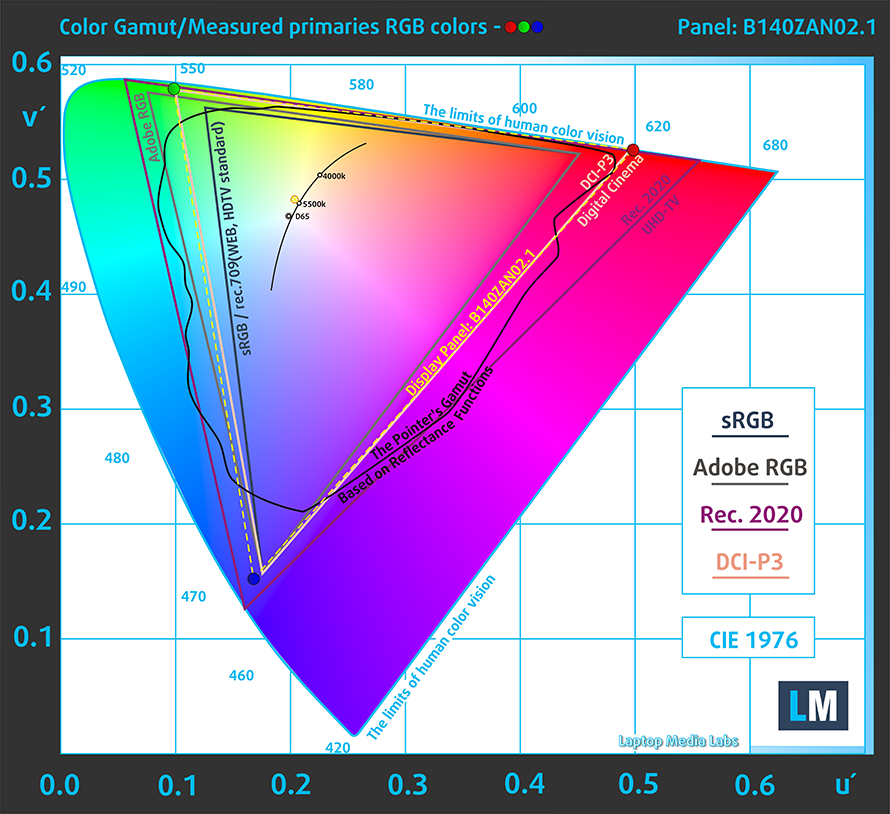
Our “Design and Gaming” profile delivers optimal color temperature (6500K) at 140 cd/m2 luminance and sRGB gamma mode.
We tested the accuracy of the display with 24 commonly used colors like light and dark human skin, blue sky, green grass, orange, etc. You can check out the results at factory condition and also, with the “Design and Gaming” profile.
Below you can compare the scores of Lenovo ThinkPad X1 Carbon 9th Gen with the default settings (left), and with the “Gaming and Web design” profile (right) – HDR is off, and it is compared with the sRGB color space.
Then, we compare the default settings and the “Gaming and Web design” profile in the P3-D65 color space (DCI-P3 primaries, D65 white point).
The next figure shows how well the display is able to reproduce really dark parts of an image, which is essential when watching movies or playing games in low ambient light.
The left side of the image represents the display with stock settings, while the right one is with the “Gaming and Web Design” profile activated. On the horizontal axis, you will find the grayscale, and on the vertical axis – the luminance of the display. On the two graphs below you can easily check for yourself how your display handles the darkest nuances but keep in mind that this also depends on the settings of your current display, the calibration, the viewing angle, and the surrounding light conditions.

Response time (Gaming capabilities)
We test the reaction time of the pixels with the usual “black-to-white” and “white-to-black” method from 10% to 90% and vice versa.
We recorded Fall Time + Rise Time = 33 ms.
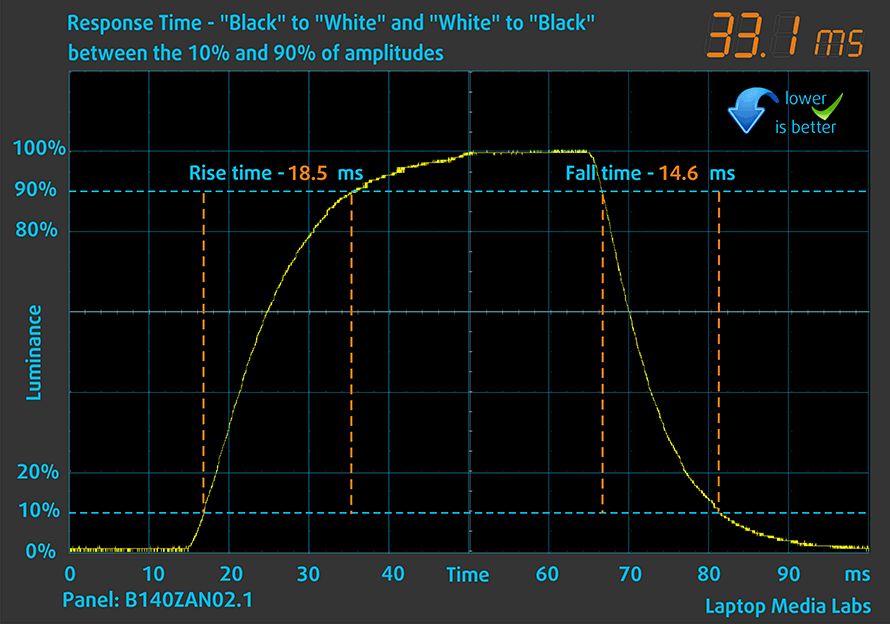
After that, we test the reaction time of the pixels with the usual “Gray-to-Gray” method from 50% White to 80% White and vice versa between 10% and 90% of the amplitude.

Health impact – PWM / Blue Light
PWM (Screen flickering)
Pulse-width modulation (PWM) is an easy way to control monitor brightness. When you lower the brightness, the light intensity of the backlight is not lowered, but instead turned off and on by the electronics with a frequency indistinguishable to the human eye. In these light impulses, the light/no-light time ratio varies, while brightness remains unchanged, which is harmful to your eyes. You can read more about that in our dedicated article on PWM.
Lenovo ThinkPad X1 Carbon 9th Gen’s display is free of flickering across all brightness levels. This makes it comfortable for extended work periods, without harming your eyes in this aspect.
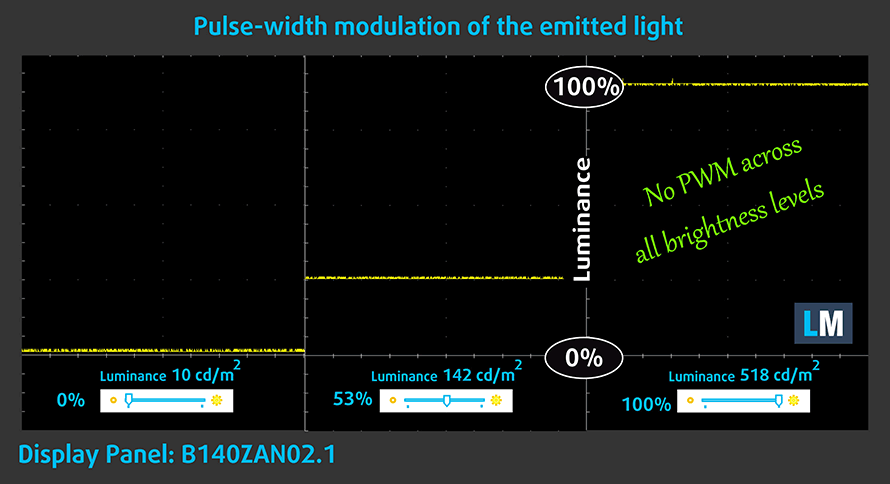
Blue light emissions
Installing our Health-Guard profile not only eliminates PWM but also reduces the harmful Blue Light emissions while keeping the colors of the screen perceptually accurate. If you’re not familiar with the Blue light, the TL;DR version is – emissions that negatively affect your eyes, skin, and your whole body. You can find more information about that in our dedicated article on Blue Light.
Buy our profiles
Since our profiles are tailored for each individual display model, this article and its respective profile package are meant for Lenovo ThinkPad X1 Carbon 9th Gen configurations with 14″ AUO B140ZAN02.1 (LEN4038) (UHD, 3840 x 2400) IPS panel.
*Should you have problems with downloading the purchased file, try using a different browser to open the link you’ll receive via e-mail. If the download target is a .php file instead of an archive, change the file extension to .zip or contact us at [email protected].
Read more about the profiles HERE.
In addition to receiving efficient and health-friendly profiles, by buying LaptopMedia's products you also support the development of our labs, where we test devices in order to produce the most objective reviews possible.

Office Work
Office Work should be used mostly by users who spend most of the time looking at pieces of text, tables or just surfing. This profile aims to deliver better distinctness and clarity by keeping a flat gamma curve (2.20), native color temperature and perceptually accurate colors.

Design and Gaming
This profile is aimed at designers who work with colors professionally, and for games and movies as well. Design and Gaming takes display panels to their limits, making them as accurate as possible in the sRGB IEC61966-2-1 standard for Web and HDTV, at white point D65.

Health-Guard
Health-Guard eliminates the harmful Pulse-Width Modulation (PWM) and reduces the negative Blue Light which affects our eyes and body. Since it’s custom tailored for every panel, it manages to keep the colors perceptually accurate. Health-Guard simulates paper so the pressure on the eyes is greatly reduced.
Get all 3 profiles with 33% discount
Sound
Lenovo ThinkPad X1 Carbon 9th Gen is equipped with four speakers – two 2W and two 0.8W runners. They produce a loud sound. However, there are deviations across the entire frequency range.

Drivers
All of the drivers and utilities for this notebook can be found here: https://pcsupport.lenovo.com/us/en/products/laptops-and-netbooks/thinkpad-x-series-laptops/thinkpad-x1-carbon-9th-gen-type-20xw-20xx/downloads/driver-list
Battery
Now, we conduct the battery tests with Windows Better performance setting turned on, screen brightness adjusted to 120 nits, and all other programs turned off except for the one we are testing the notebook with. This laptop’s 57Wh battery pack delivers 9 hours and 5 minutes of Web browsing, or 6 hours and 34 minutes of video playback. This is far from impressive, but keep in mind it has to power a 4K display in our case.
In order to simulate real-life conditions, we used our own script for automatic web browsing through over 70 websites.
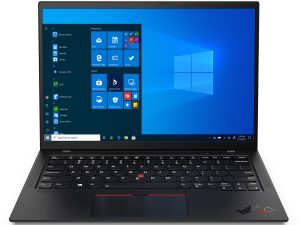

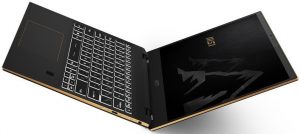
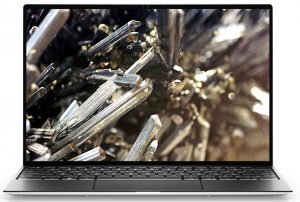
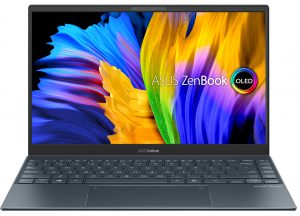
For every test like this, we use the same video in HD.





CPU options
This laptop can be equipped with a Core i5-1135G7, Core i5-1145G7, Core i7-1165G7, or Core i7-1185G7.
Results are from the Cinebench R23 CPU test (the higher the score, the better)
Results are from our Photoshop benchmark test (the lower the score, the better)
Lenovo ThinkPad X1 Carbon (9th Gen, 2021) CPU variants
Here you can see an approximate comparison between the CPUs that can be found in the Lenovo ThinkPad X1 Carbon (9th Gen, 2021) models on the market. This way you can decide for yourself which Lenovo ThinkPad X1 Carbon (9th Gen, 2021) model is the best bang for your buck.
Note: The chart shows the cheapest different CPU configurations so you should check what the other specifications of these laptops are by clicking on the laptop’s name / CPU.
Results are from the Cinebench R23 CPU test (the higher the score, the better)
Results are from our Photoshop benchmark test (the lower the score, the better)
GPU options
All of the available graphics options include the Iris Xe Graphics G7, albeit those that come inside a Core i5 will feature 80 EUs, while those in the Core i7s will be paired with 96EUs.
Results are from the 3DMark: Time Spy (Graphics) benchmark (higher the score, the better)
Results are from the 3DMark: Fire Strike (Graphics) benchmark (higher the score, the better)
Results are from the 3DMark: Wild Life benchmark (higher the score, the better)
Results are from the Unigine Superposition benchmark (higher the score, the better)
Lenovo ThinkPad X1 Carbon (9th Gen, 2021) GPU variants
Here you can see an approximate comparison between the GPUs that can be found in the Lenovo ThinkPad X1 Carbon (9th Gen, 2021) models on the market. This way you can decide for yourself which Lenovo ThinkPad X1 Carbon (9th Gen, 2021) model is the best bang for your buck.
Note: The chart shows the cheapest different GPU configurations so you should check what the other specifications of these laptops are by clicking on the laptop’s name / GPU.
Results are from the 3DMark: Time Spy (Graphics) benchmark (higher the score, the better)
Results are from the 3DMark: Fire Strike (Graphics) benchmark (higher the score, the better)
Results are from the 3DMark: Wild Life (Graphics) benchmark (higher the score, the better)
Results are from the Unigine Superposition benchmark (higher the score, the better)
Gaming tests

| CS:GO | HD 1080p, Low (Check settings) | HD 1080p, Medium (Check settings) | HD 1080p, MAX (Check settings) |
|---|---|---|---|
| Average FPS | 162 fps | 121 fps | 69 fps |

| DOTA 2 | HD 1080p, Low (Check settings) | HD 1080p, Normal (Check settings) | HD 1080p, High (Check settings) |
|---|---|---|---|
| Average FPS | 146 fps | 76 fps | 58 fps |
Temperatures and comfort
Max CPU load
In this test we use 100% on the CPU cores, monitoring their frequencies and chip temperature. The first column shows a computer’s reaction to a short load (2-10 seconds), the second column simulates a serious task (between 15 and 30 seconds), and the third column is a good indicator of how good the laptop is for long loads such as video rendering.
Average core frequency (base frequency + X); CPU temp.
| Intel Core i7-1185G7 (15W TDP) | 0:02 – 0:10 sec | 0:15 – 0:30 sec | 10:00 – 15:00 min |
|---|---|---|---|
| Lenovo ThinkPad X1 Carbon 9th Gen | 3.53 GHz @ 96°C @ 44W | 3.23 GHz @ 96°C @ 36W | 2.78 GHz @ 91°C @ 26W |
| Lenovo ThinkPad P14s Gen 2 | 3.67 GHz @ 100°C @ 48W | 3.36 GHz @ 100°C @ 39W | 2.54 GHz @ 74°C @ 20W |
| Fujitsu LifeBook U9311X | 3.08 GHz @ 98°C @ 35W | 2.75 GHz @ 97°C @ 27W | 2.26 GHz @ 82°C @ 18W |
| MSI Summit E15 (A11x) | 3.32 GHz @ 94°C @ 38W | 3.19 GHz @ 95°C @ 36W | 3.05 GHz @ 95°C @ 33W |
| Dell Latitude 14 7420 | 3.66 GHz @ 98°C @ 47W | 3.04 GHz @ 97°C @ 30W | 2.17 GHz @ 76°C @ 16W |
| MSI Prestige 14 (A11Sx) | 3.80 GHz @ 94°C @ 53W | 3.48 GHz @ 95°C @ 42W | 3.22 GHz @ 91°C @ 35W |
| Lenovo Yoga 9i (14) | 3.08 GHz @ 92°C @ 42W | 3.14 GHz @ 96°C @ 34W | 2.28 GHz @ 76°C @ 19W |
The result here is pretty impressive, given the tiny size of the fans. However, the test ends with a temperature of 91°C, which is on the high side.
Comfort during full load
Naturally, these fans can’t produce a lot of noise. On the other hand, the heat is concentrated in the top left part of the keyboard, with the highest temperature reaching 45.6°C.

Verdict
 The ThinkPad X1 Carbon has never failed to impress. Now, the 9th generation of this product brings a display with a higher aspect ratio, resulting in more content able to be shown vertically. What this means is that data analysts, and developers will be happy.
The ThinkPad X1 Carbon has never failed to impress. Now, the 9th generation of this product brings a display with a higher aspect ratio, resulting in more content able to be shown vertically. What this means is that data analysts, and developers will be happy.
The laptop is lightweight, thin, and has a surprisingly strong chassis, considering its form factor. Another surprising thing is that Lenovo has managed to fit the device with two USB Type-A ports, besides two Thunderbolt 4 connectors, an HDMI port, and a SIM card reader with an optional 5G support.
Other great technologies featured here are the privacy shutter on the camera, IR face recognition sensor, and the fingerprint reader, located on top of the power button.
Lenovo ThinkPad X1 Carbon 9th Gen’s equipped with a 16:10 4K IPS panel with high maximum brightness, very good contrast ratio, and comfortable viewing angles. Moreover, it covers 99% of the DCI-P3 color gamut, and with the help of our Gaming and Web design profile, the color representation in this spectrum becomes really accurate. Thankfully, the panel doesn’t use PWM for brightness adjustment, which lets you work for long periods of hours while remaining safe in this aspect.
However, there is a downside to having such a display – battery life. Unfortunately, the laptop lasts for 9 hours of Web browsing, or 6 hours and a half of video playback. The latter is half the score we got from the 8th Gen ThinkPad X1 Carbon with a 1080p display.
Nevertheless, arguably the biggest improvement year on year is the performance. Comparing Tiger Lake chips to Comet Lake-U CPUs is pointless in 2022, but still, you get a good amount of processing and graphics power inside one of the most compact business laptops on the market.
There is one unfortunate thing, though – the memory is soldered to the motherboard. On the other hand, you can’t expect it to be different at 14.9mm. And to be fair, Lenovo offers options of up to 32GB of LPDDR4x RAM, working in quad-channel mode. Plus, the single M.2 PCIe x4 slot supports Gen 4 drives.
If you have the money to space, the ThinkPad X1 Carbon 9th Gen is quite the laptop on hand. And if you are willing to wait a bit more, the 10th Gen device should be coming shortly, bringing Alder Lake processors, and LPDDR5 RAM for even faster performance.
You can check the prices and configurations in our Specs System: https://laptopmedia.com/series/lenovo-thinkpad-x1-carbon-9th-gen-2021/
Pros
- More than 13 hours of Web browsing on a single charge
- Great input devices
- 99% DCI-P3 coverage and accurate color representation with our profile
- 4K panel has high maximum brightness and 16:10 aspect ratio (AUO B156HAN13.1)
- Supports PCIe x4 Gen 4 drives
- Two Thunderbolt 4 connectors (both can be used for charging)
- Wi-Fi 6 support plus optional IR face recognition, fingerprint reader, and 5G support
- Quad-channel memory
- No PWM
Cons
- Lacks an SD card reader
- Memory is soldered to the motherboard
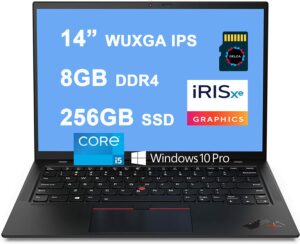
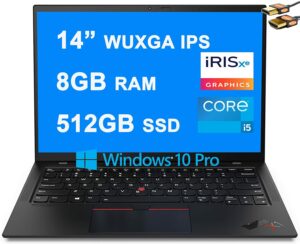
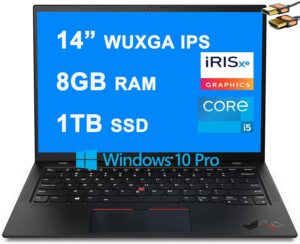

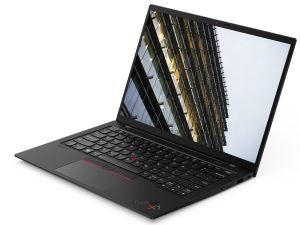
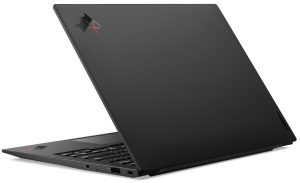

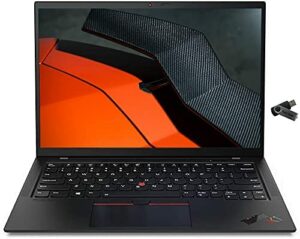
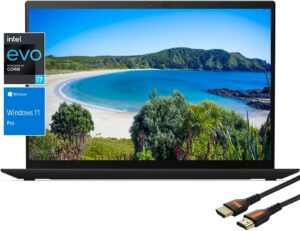
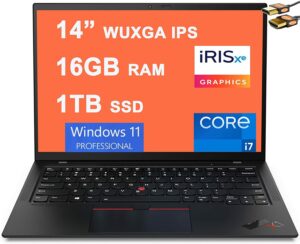

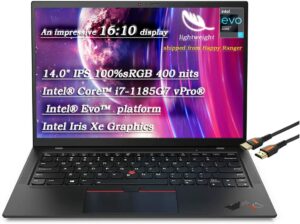
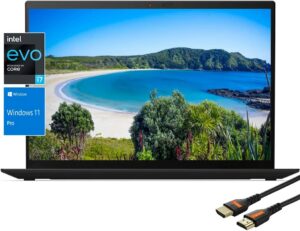

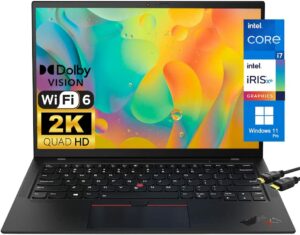
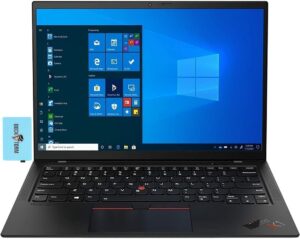

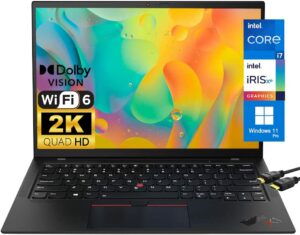
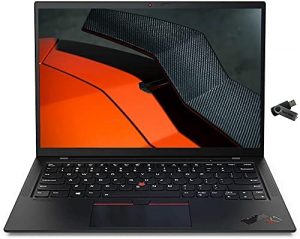
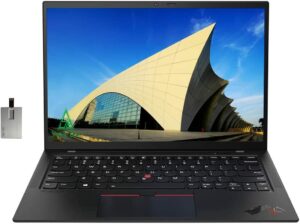




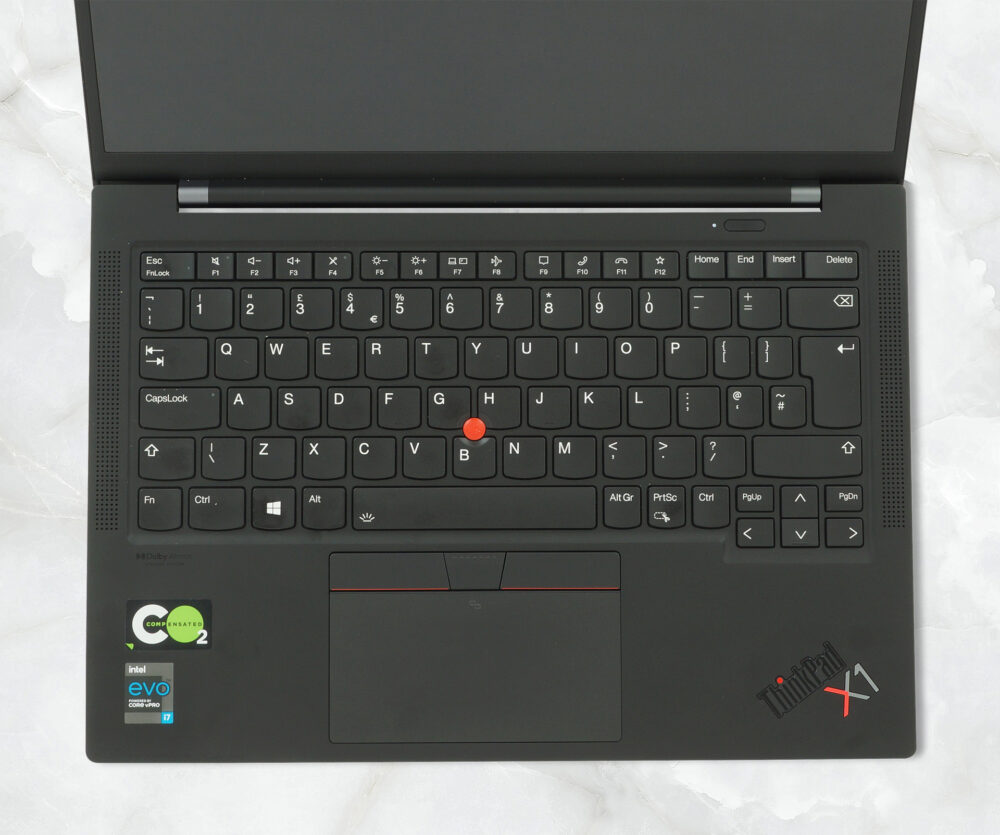



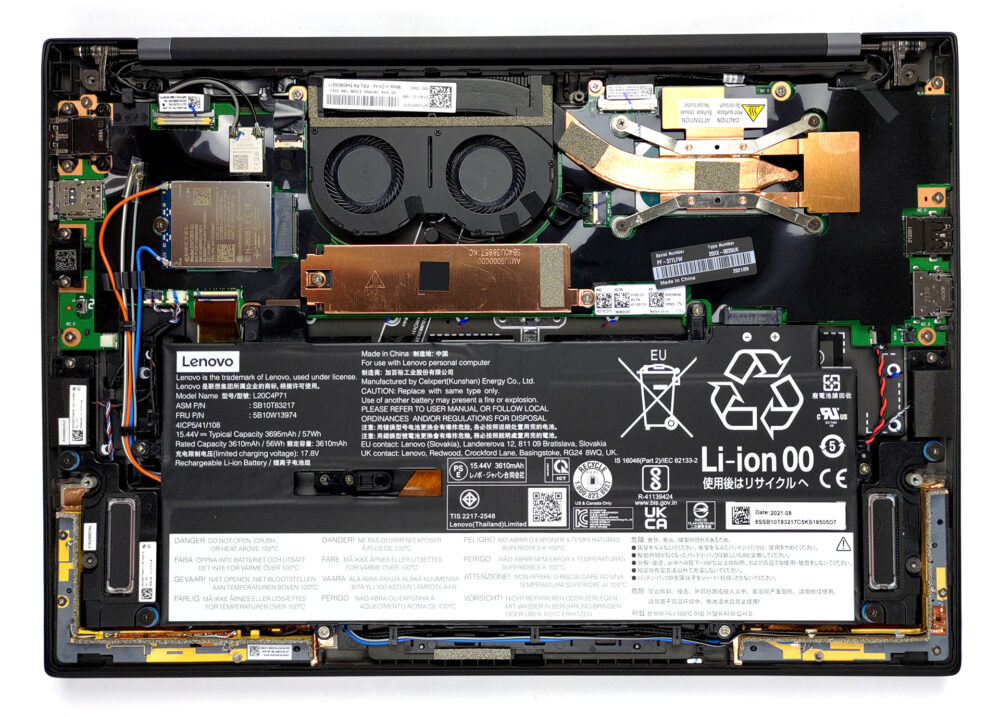
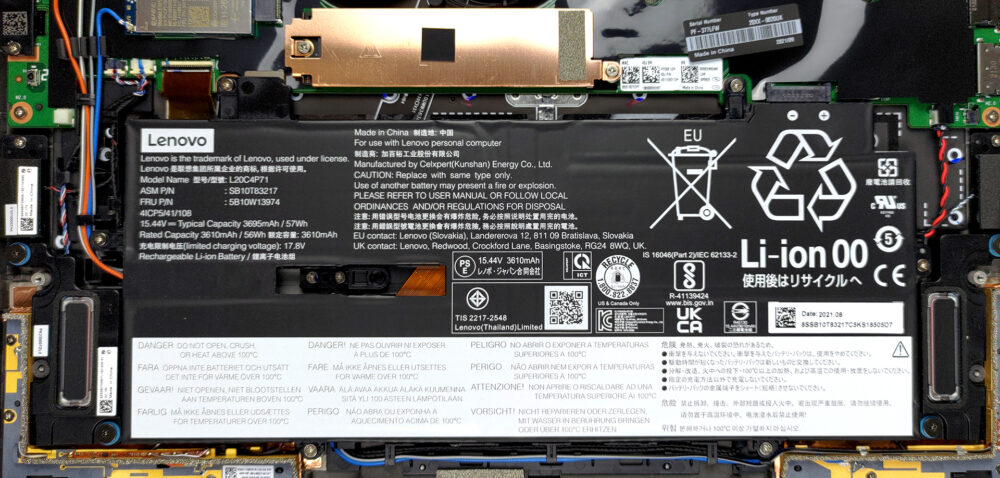


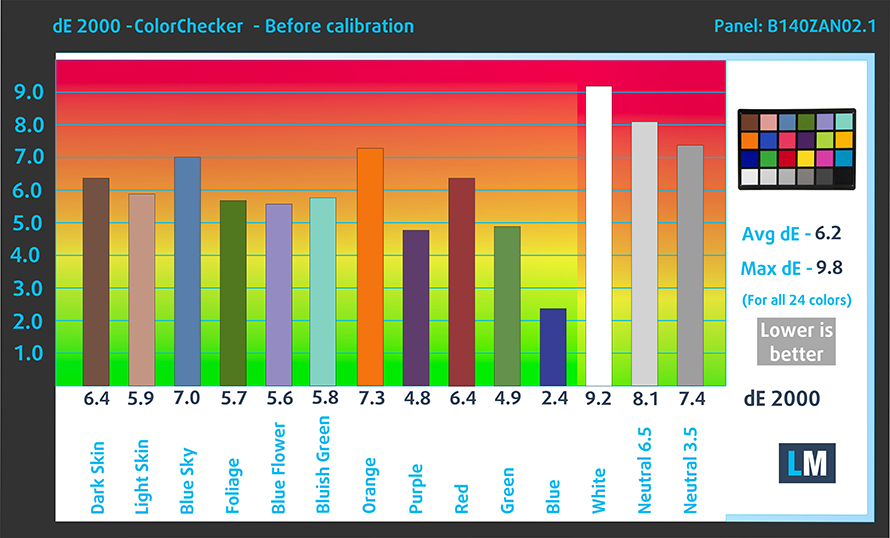
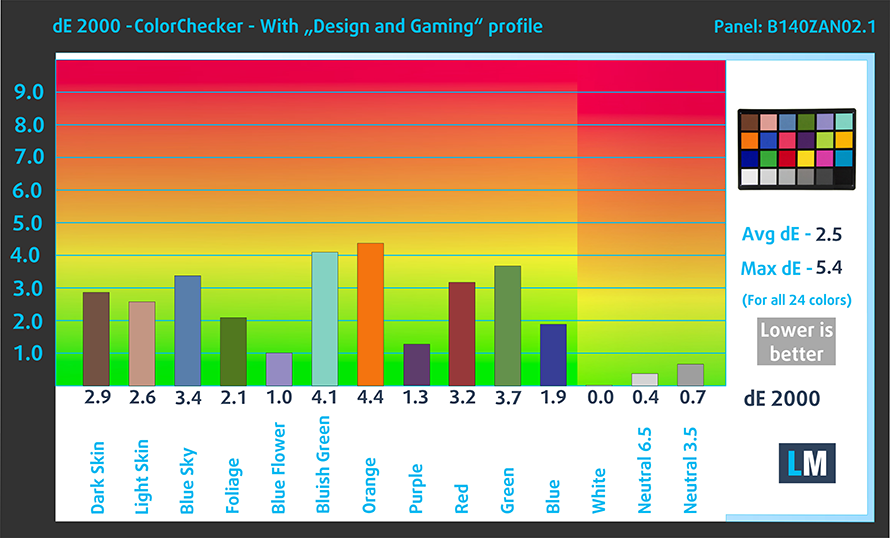
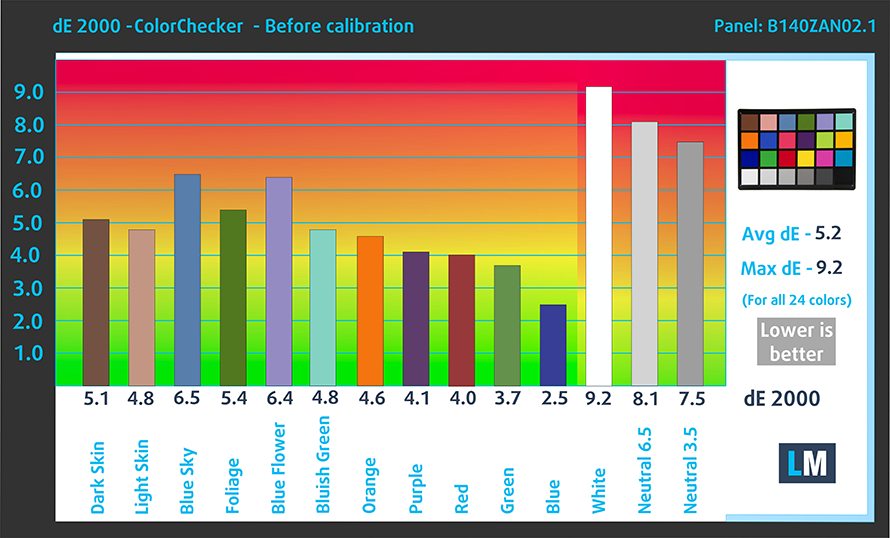
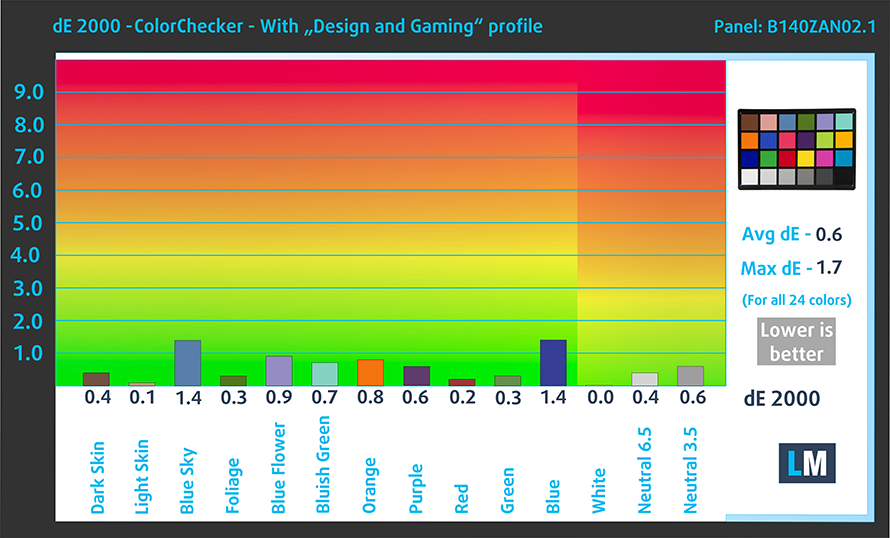

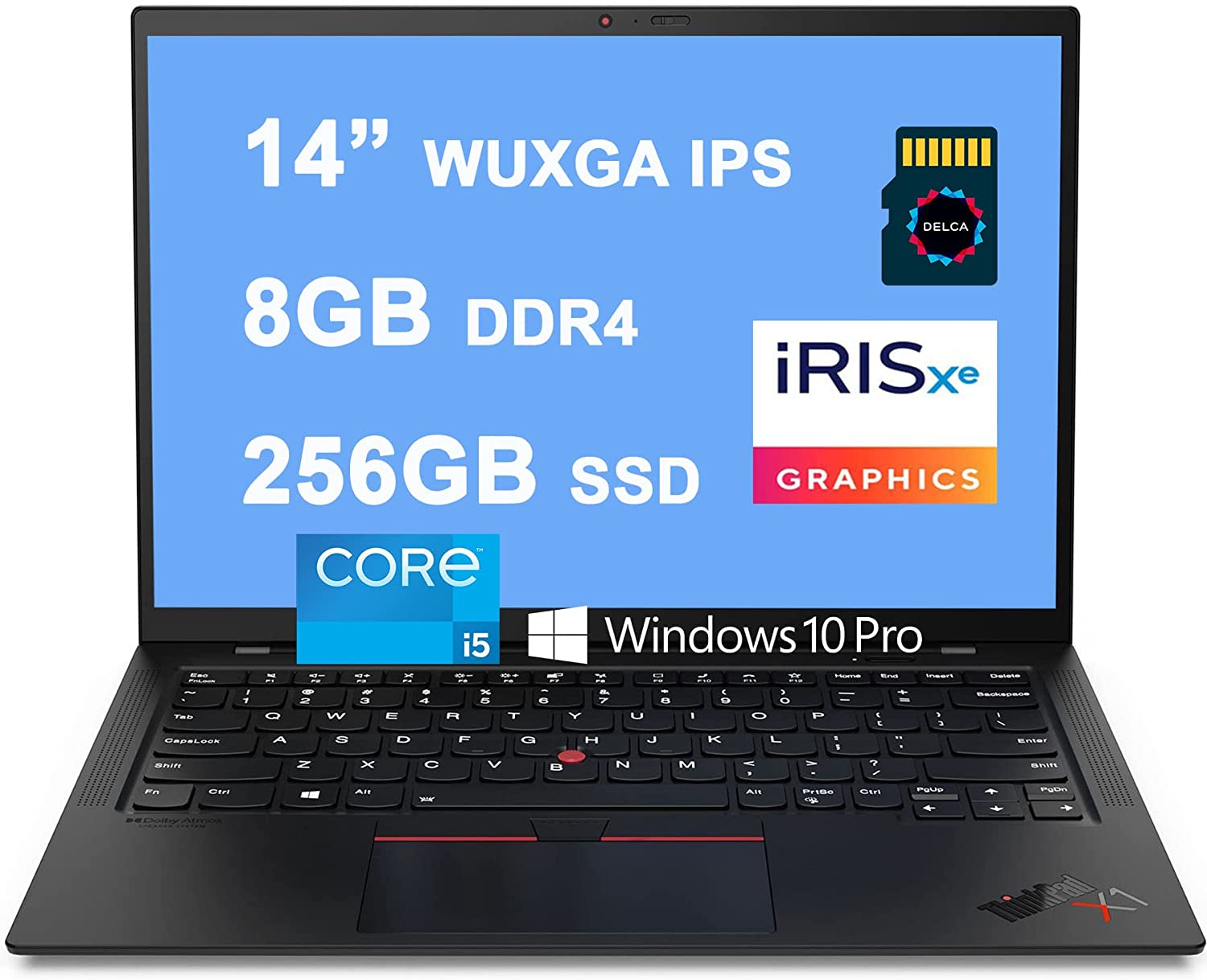
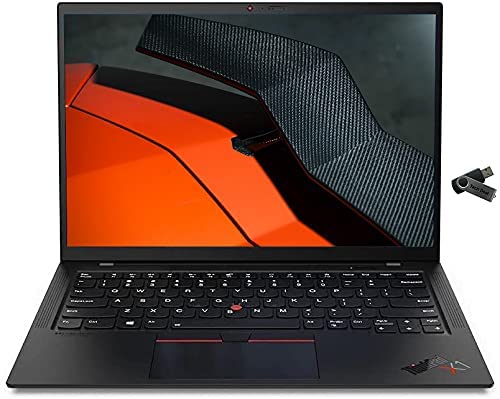
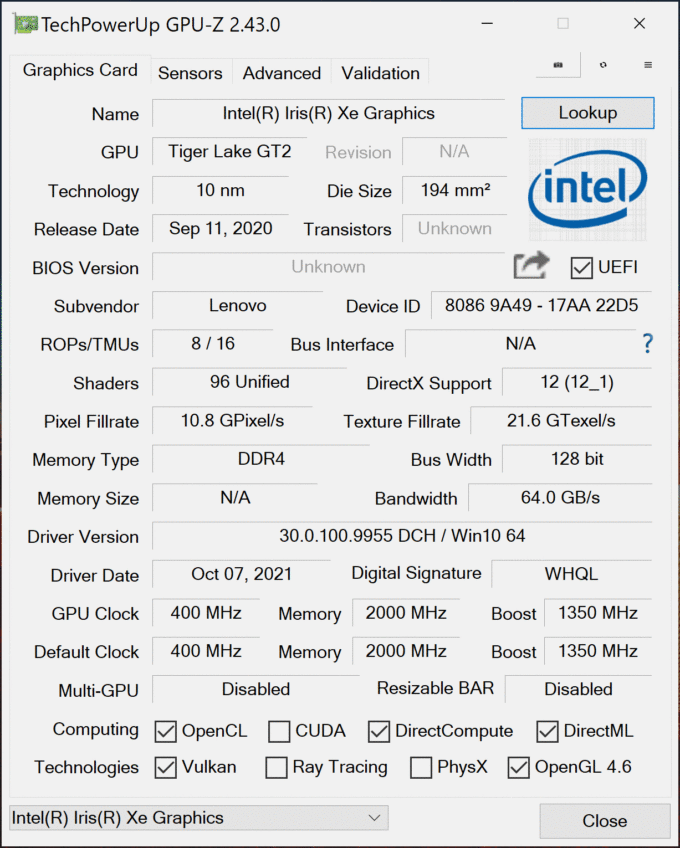







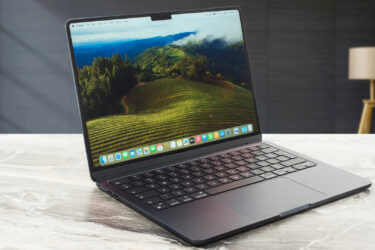
Good sir, the memory cannot be quad channel. The CPU supports a maximum of 2 channels of memory.